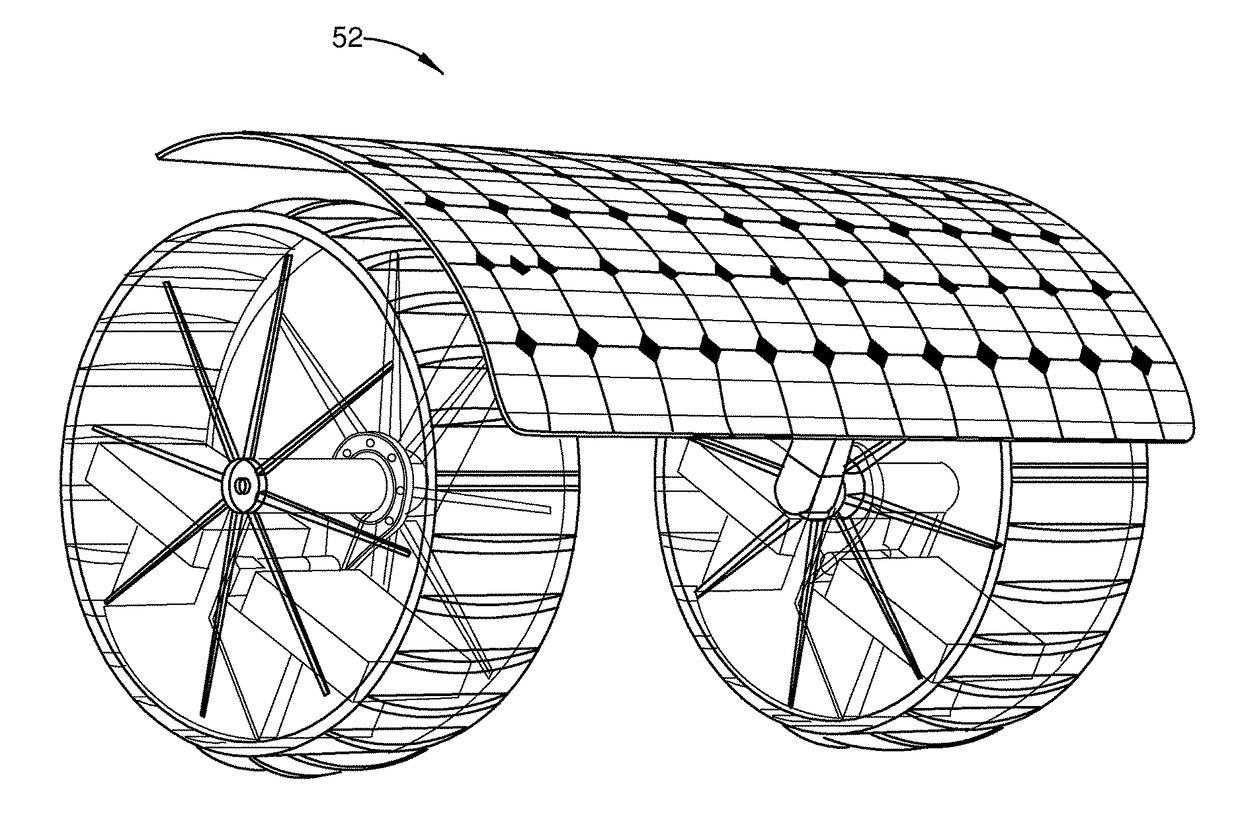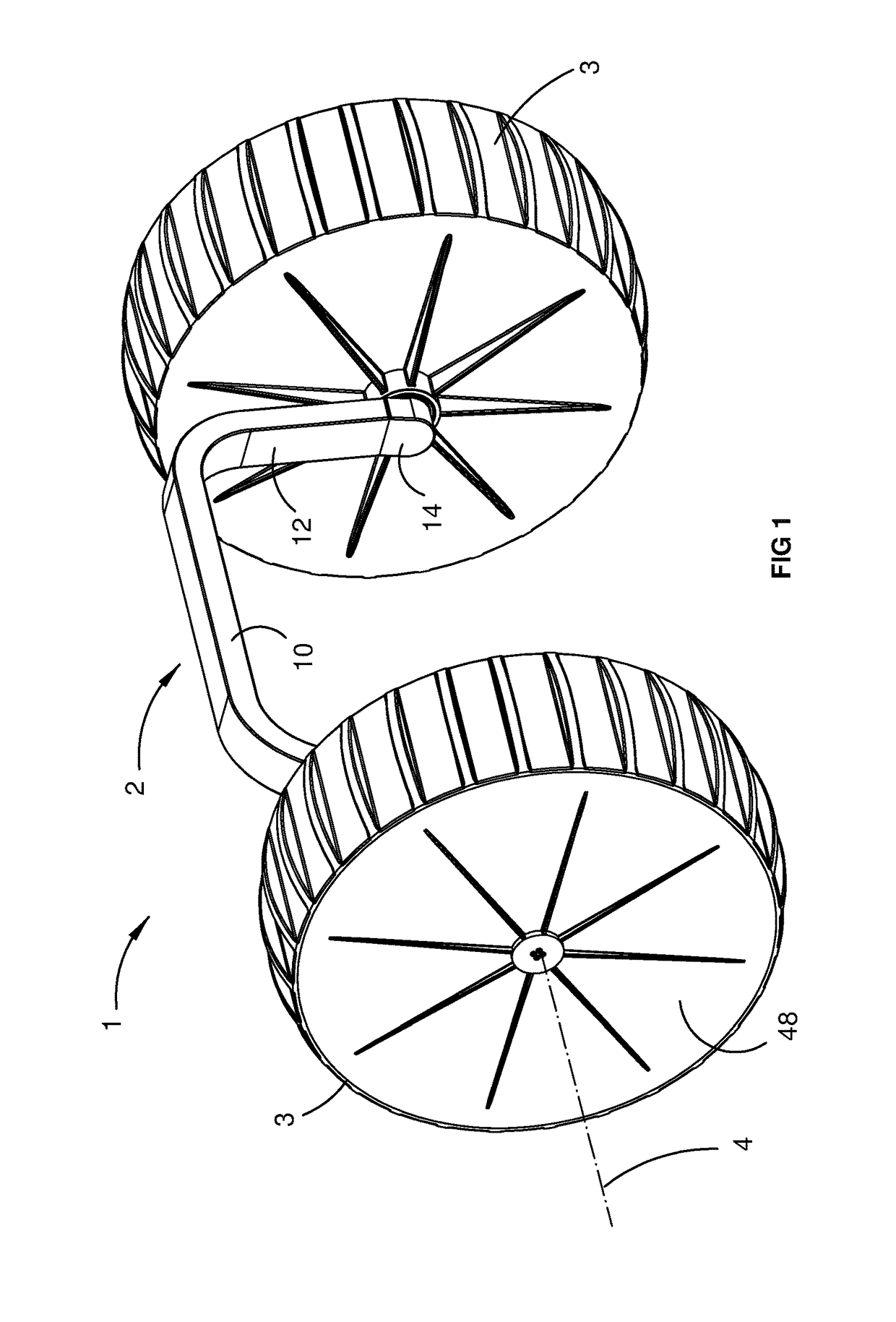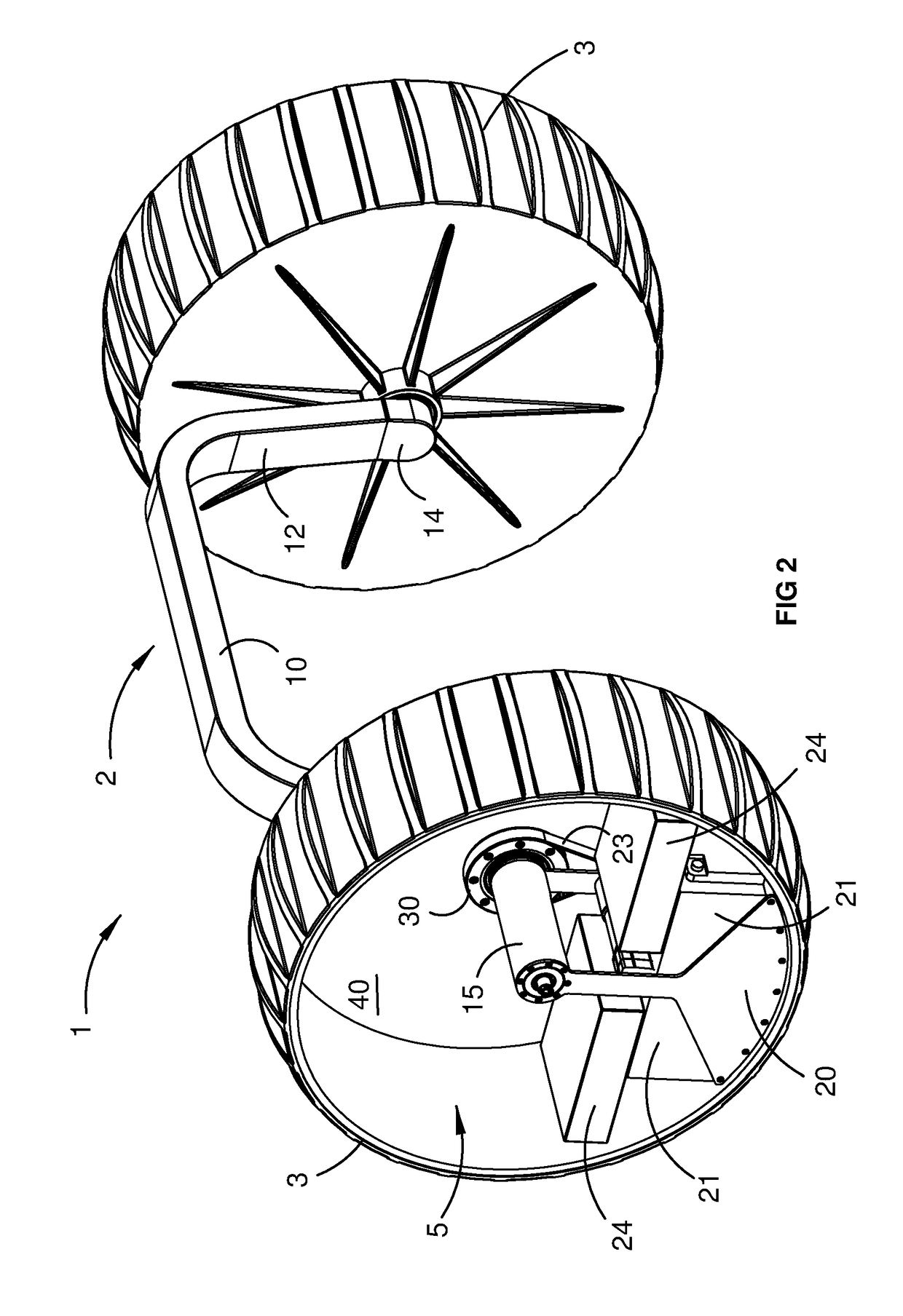Statically stable robot using wheel with inner system
a technology of static stability and robots, applied in the direction of electric propulsion mounting, light to electrical conversion, battery/cell propulsion, etc., can solve the problems of obstructing space, rendering known vehicles of this type unsuitable for applications requiring relatively high ground clearance, and reducing ground clearan
- Summary
- Abstract
- Description
- Claims
- Application Information
AI Technical Summary
Benefits of technology
Problems solved by technology
Method used
Image
Examples
Embodiment Construction
[0041]Referring initially to FIGS. 1 to 3, the invention provides an omni-directional di-wheel vehicle 1 including a chassis 2, a pair of wheels 3 supported in spaced apart relationship by the chassis for rotation about a common axis 4, and a pair of drive modules 5 associated with the respective wheels. The wheels may incorporate integral treads or tyres as required for the intended application.
[0042]The chassis 2 includes a transverse bridge section 10, and a pair of legs 12 extending generally downwardly from opposite sides of the bridge section. The legs 12 are connected at their lower ends to the respective drive modules 5 by means of lugs 14 and tubular axle formations 15, which in turn support the respective wheels for independent rotation about the common axis, as described more fully below. The drive modules 5 and the chassis 2 are thereby interconnected via the tubular axle formations as a discrete subassembly 16 for rotation relative to the wheels about the common axis 4....
PUM
 Login to View More
Login to View More Abstract
Description
Claims
Application Information
 Login to View More
Login to View More - R&D
- Intellectual Property
- Life Sciences
- Materials
- Tech Scout
- Unparalleled Data Quality
- Higher Quality Content
- 60% Fewer Hallucinations
Browse by: Latest US Patents, China's latest patents, Technical Efficacy Thesaurus, Application Domain, Technology Topic, Popular Technical Reports.
© 2025 PatSnap. All rights reserved.Legal|Privacy policy|Modern Slavery Act Transparency Statement|Sitemap|About US| Contact US: help@patsnap.com



